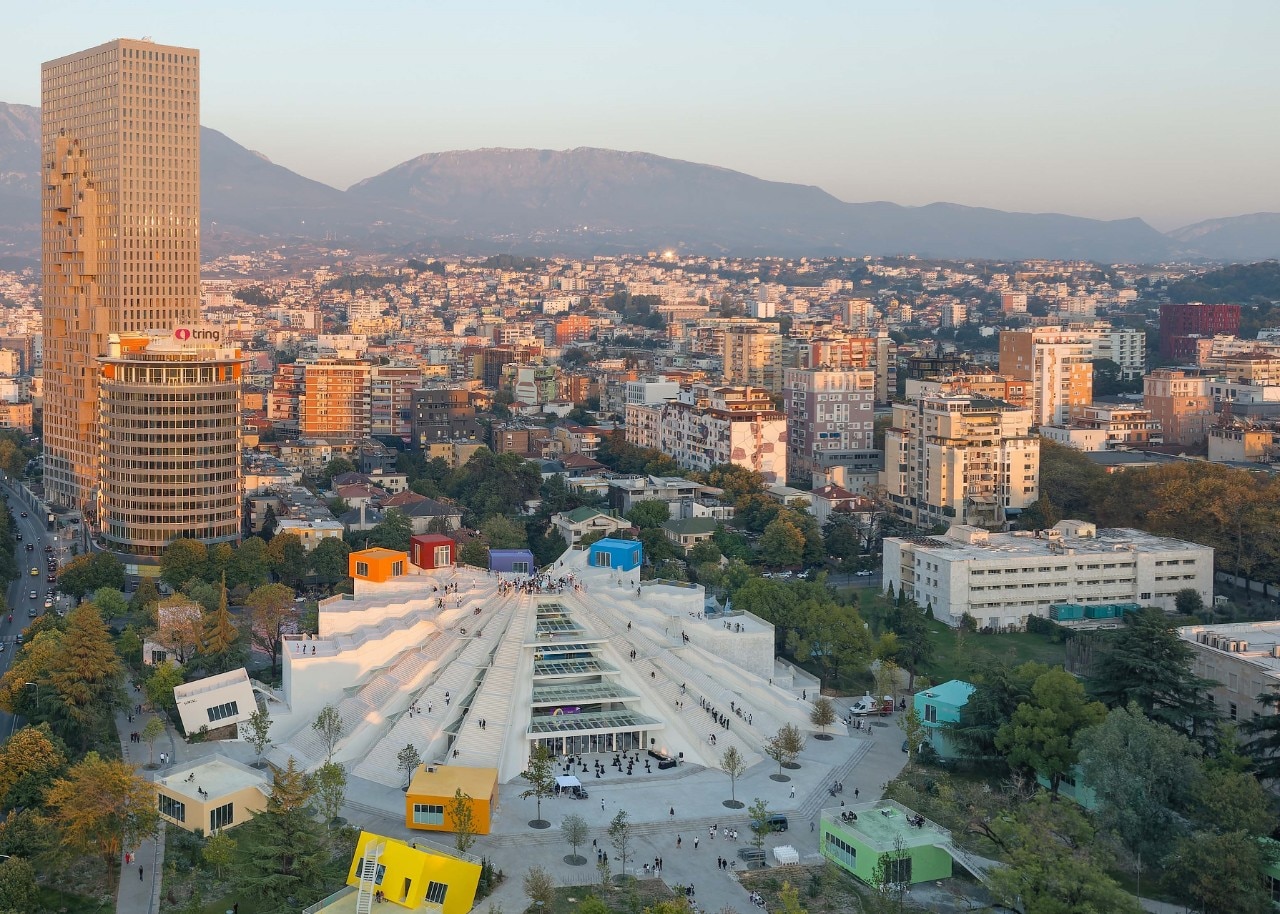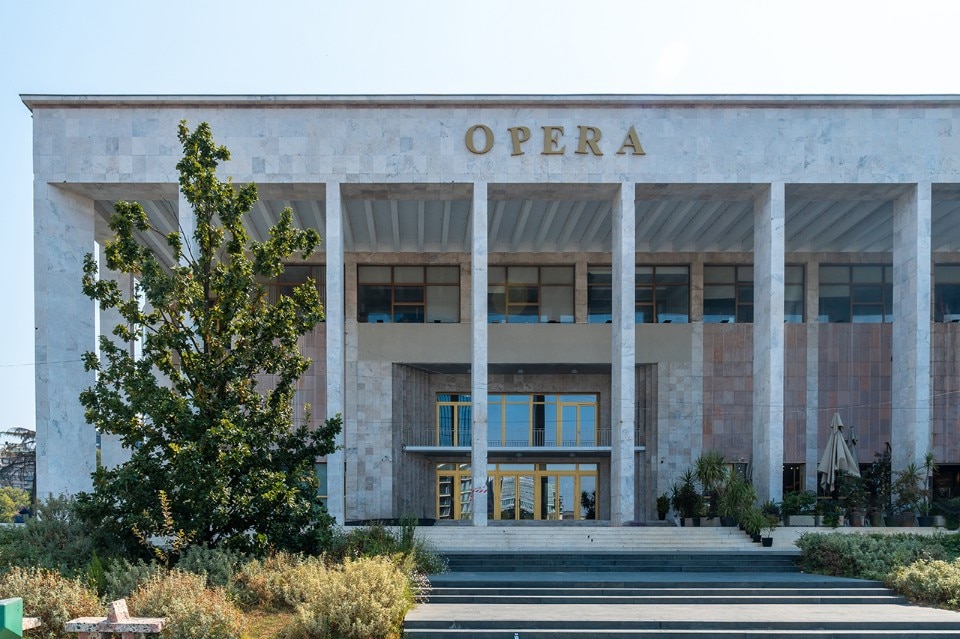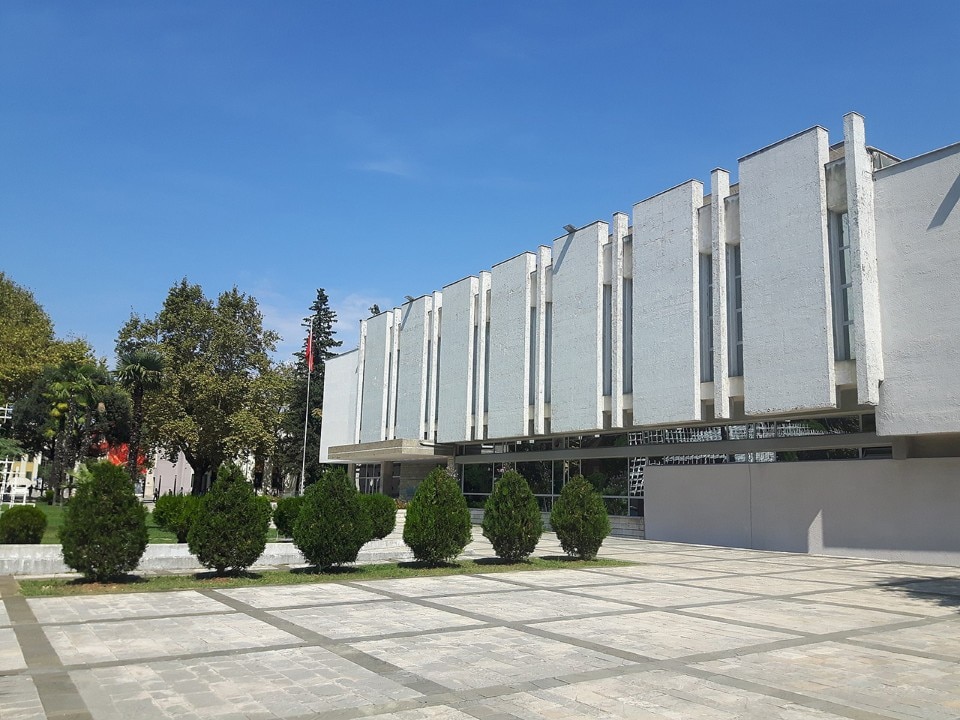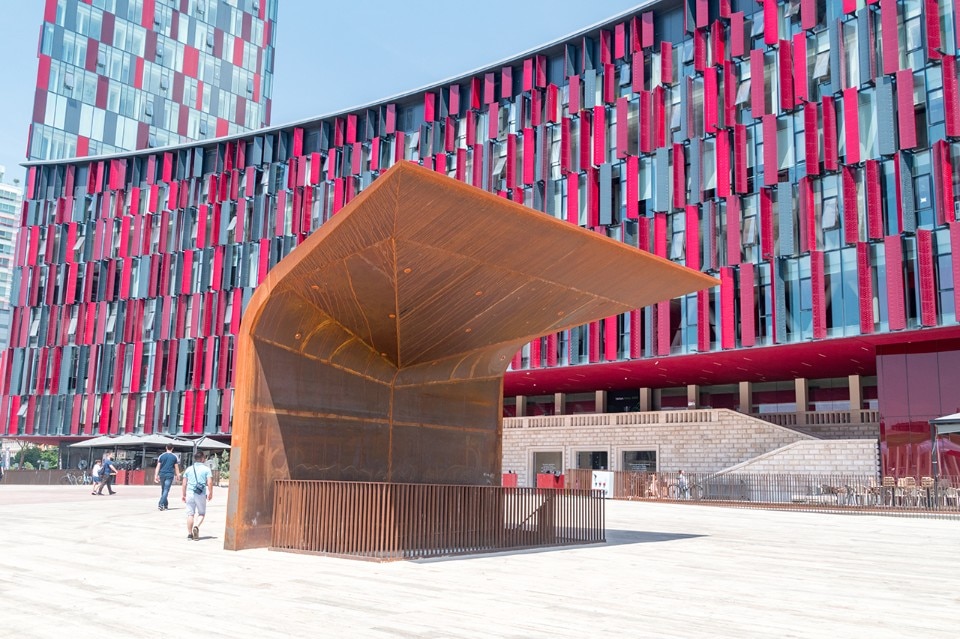Enver Hoxha was the leader of Albania who, under the aegis of the communist regime, between 1944 and 1985, defined the construction of a nation between modernization and isolation. Following the liberation from fascism, the subsequent regime built a series of emblematic architectures that created the imagination and propaganda of an entire nation. Tirana, the Albanian capital, thus also became the fulcrum of an architectural transformation, pivotal in displaying a new State equipped with public infrastructures and representative buildings. Therefore, portions of the historical fabric were substituted by monumental projects, as in the case of the Palace of Culture, which took the place of the ancient Ottoman market and related mosque, while new collective spaces gave the capital a new appearance.
Today, the same buildings and monuments open up to unpredictable or suspended futures. Examples include the Pyramid of Tirana, on which the Dutch studio MVRDV unveiled a radical reuse project in 2018, or the more unsure fates of the thousands of bunkers built to deal with a hypothetical foreign invasion. The fall of the communist regime has in fact given way, especially in recent years, to economic and transformation stimuli typical of Europe and America, often causing paradoxes and inconsistencies, as told in the recent documentary presented at the Turin Film Festival "Anulloje Ligjin" by Fabrizio Bellomo, in Engligh cancel the law/cancel the decree. The documentary reveals the continuous relationship between present and past that hovers in the forms and memories of the artists, in a cross-section of reality that sees a strong creative drive rebound from a communist and isolationist past to a capitalist and globalized present.
In a Country that is transforming, often demolishing or heavily modifying the image of its past - as happened in the Arena Kombëtare in which the new intervention almost totally replaces the historic building - this collection brings together the visionary and iconic architectures of the years by Hoxha. Hence, the collection gathers projects from cultural buildings such as the National Art Gallery and the Palace of Culture to the minor architecture of railway stations and bunkers, mirrors, in both cases, of a representation of the regime through the forms of buildings. Furthermore, the architecture under the Hoxha regime impacted the construction of spaces for the community and the search for a visionary language, as visible in the Palace of Congresses in Tirana or the same celebratory mausoleum built for the leader.
Communist monuments and architecture remain constellations of a past that still needs to be discovered and known.





















